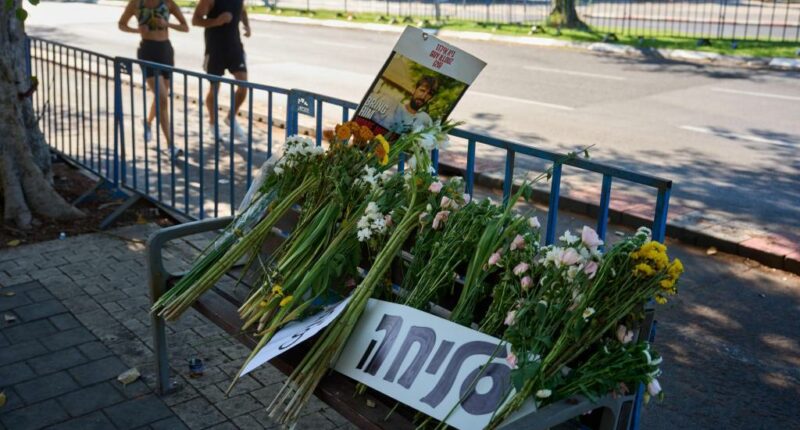Share this @internewscast.com
By SAM MEDNICK and GIOVANNA DELL’ORTO, Associated Press
In TEL AVIV, Israel (AP) — The fragile ceasefire in the ongoing two-year conflict between Israel and Hamas was still in place on Tuesday, although numerous complex challenges lay ahead. This follows the previous day’s celebrations over the return of the last 20 surviving hostages to Israel from Gaza and the corresponding release of many Palestinian prisoners.
Immediate concerns now revolve around questions such as when Hamas will return the bodies of 24 hostages believed to have died in Gaza to Israel. Another matter involves the health status of both the released hostages and those Palestinians who have been freed.

So far, only four bodies of deceased hostages have been returned, as part of the initial stage of the ceasefire agreement facilitated by U.S. President Donald Trump. On Tuesday, the Israeli military confirmed the identities of two individuals: Guy Illouz from Israel and Bipin Joshi, a Nepali student.
Both men were in their twenties when they were captured by Hamas during the October 7, 2023, attack that sparked the war. Illouz was seized from the Nova music festival, while Joshi was taken from a bomb shelter.
According to Israeli reports, Illouz died due to injuries sustained while receiving inadequate medical attention, whereas Joshi was killed during captivity in the early phase of the conflict. The National Center of Forensic Medicine in Israel has yet to establish the official causes of their deaths.
On Tuesday, the released Israeli hostages were receiving medical treatment, with some families indicating it may be weeks before they are able to return home. In the regions of the West Bank and Gaza, where numerous prisoners have been freed, several individuals were also taken to hospitals for care.
Separately, the Israeli military said troops in the northern Gaza Strip had “opened fire to remove the threat” of several people approaching them on Tuesday across the “yellow line” and not complying with orders to stop. It didn’t immediately comment on any casualties in the incident.
Part of the ceasefire agreement is that Israel would pull back in Gaza to the so-called yellow line where its forces were in August, before launching their latest offensive on the Gaza City in the strip’s north.
Longer-term issues also hang in the balance, including whether Hamas will disarm, who will govern and help rebuild Gaza, and the overarching question of Palestinian statehood, which is central for Palestinians and many countries in the region.
“The first steps to peace are always the hardest,” Trump had said as he stood with foreign leaders in Egypt on Monday for a summit on Gaza’s future. He hailed the ceasefire deal he brokered between Israel and Hamas as the end of the war in Gaza — and start of rebuilding the devastated territory.
On Tuesday, the U.N. development agency said the latest joint estimate from the U.N., the European Union and the World Bank is that $70 billion will be required to rebuild Gaza. Jaco Cillers, special representative of UNDP administrator for a program to help Palestinians, said $20 billion would be needed in the next three years, and the rest would be needed over a longer period — possibly decades.
In Egypt, Trump urged regional leaders to “put old feuds aside” as world leaders met to discuss the challenges ahead in securing a lasting peace. Representatives from Israel or Hamas were not at the summit.
Dell’Orto reported from Jerusalem. Associated Press writer Jamey Keaten in Geneva contributed to this report.
Originally Published: October 14, 2025 at 7:48 AM EDT
















